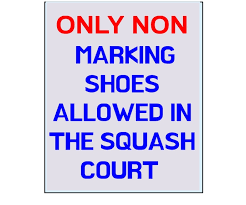The Importance of Non-Marking Shoes
Non-marking shoes have become increasingly popular in various settings due to their unique benefits and versatility. Whether you’re indoors or outdoors, these specialized shoes offer distinct advantages that make them a preferred choice for many individuals.
What are Non-Marking Shoes?
Non-marking shoes are footwear designed with outsoles that do not leave scuff marks or streaks on indoor surfaces. These shoes are typically made with rubber compounds that provide traction without causing damage to floors, gymnasiums, dance studios, or other indoor environments.
The Benefits of Non-Marking Shoes
Protect Indoor Surfaces: One of the primary benefits of non-marking shoes is their ability to protect indoor surfaces from scuffs and marks. Whether you’re playing sports, dancing, or simply walking indoors, these shoes help maintain the cleanliness and appearance of floors.
Enhanced Traction: Non-marking shoes offer excellent traction on a variety of surfaces without compromising safety. The specialized outsoles provide grip and stability, making them ideal for activities that require quick movements and agility.
Versatility: From athletic activities to casual wear, non-marking shoes are versatile enough to be worn in a wide range of settings. They can transition seamlessly from indoor courts to outdoor spaces without leaving unwanted marks behind.
Where to Wear Non-Marking Shoes
Non-marking shoes are suitable for a variety of activities and environments, including:
- Sports courts (basketball, volleyball, racquetball)
- Dance studios (ballet, jazz, hip-hop)
- Gymnasiums and fitness centers
- Schools and educational facilities
- Homes with hardwood or laminate floors
In Conclusion
Non-marking shoes offer a practical solution for individuals who value both performance and aesthetics. By choosing footwear designed specifically to prevent scuff marks and maintain traction on indoor surfaces, you can enjoy greater comfort and peace of mind in various settings.
5 Essential Tips for Maintaining Non-Marking Shoes
- Choose non-marking shoes with rubber soles to prevent scuffing floors.
- Regularly clean the soles of your non-marking shoes to remove dirt and debris that could cause marks.
- Avoid wearing non-marking shoes on abrasive surfaces like gravel or rough concrete to maintain their non-marking properties.
- Store your non-marking shoes properly when not in use to prevent damage to the soles.
- Consider using shoe protectors or covers for your non-marking shoes in high-traffic areas to extend their lifespan.
Choose non-marking shoes with rubber soles to prevent scuffing floors.
When selecting non-marking shoes, opt for pairs with rubber soles to effectively avoid scuffing floors. The rubber outsoles not only provide traction and stability but also ensure that indoor surfaces remain pristine and free from unsightly marks. By choosing footwear specifically designed to be non-marking, you can enjoy both functionality and floor protection in various environments without compromising style or performance.
Regularly clean the soles of your non-marking shoes to remove dirt and debris that could cause marks.
Regularly cleaning the soles of your non-marking shoes is a crucial tip to maintain their effectiveness and prevent unwanted marks. By removing dirt and debris from the outsoles, you not only ensure better traction but also extend the lifespan of your shoes. A simple routine of wiping or brushing off any buildup can help preserve the integrity of the non-marking properties, allowing you to confidently move on indoor surfaces without leaving a trace behind.
Avoid wearing non-marking shoes on abrasive surfaces like gravel or rough concrete to maintain their non-marking properties.
To preserve the non-marking properties of your shoes, it is advisable to refrain from wearing them on abrasive surfaces such as gravel or rough concrete. These harsh environments can compromise the specialized outsoles of non-marking shoes, potentially diminishing their ability to prevent scuff marks on indoor surfaces. By being mindful of where you wear your non-marking shoes, you can ensure that they maintain their effectiveness and longevity for optimal performance in indoor settings.
Store your non-marking shoes properly when not in use to prevent damage to the soles.
To prolong the lifespan and effectiveness of your non-marking shoes, it is essential to store them properly when not in use. By taking the time to store your footwear correctly, you can prevent damage to the delicate soles and ensure that they maintain their non-marking properties over time. Consider placing them in a cool, dry place away from direct sunlight and extreme temperatures. Additionally, using shoe trees or stuffing them with tissue paper can help maintain their shape and prevent creasing. Proper storage not only protects your non-marking shoes but also preserves their performance for long-lasting use.
Consider using shoe protectors or covers for your non-marking shoes in high-traffic areas to extend their lifespan.
To prolong the lifespan of your non-marking shoes, it is advisable to consider using shoe protectors or covers, especially in high-traffic areas. By adding this extra layer of protection, you can prevent excessive wear and tear on the soles of your shoes, ensuring that they maintain their non-marking properties for a longer period. This simple precaution can help preserve the integrity and performance of your footwear, allowing you to continue enjoying the benefits of non-marking shoes in various environments.

